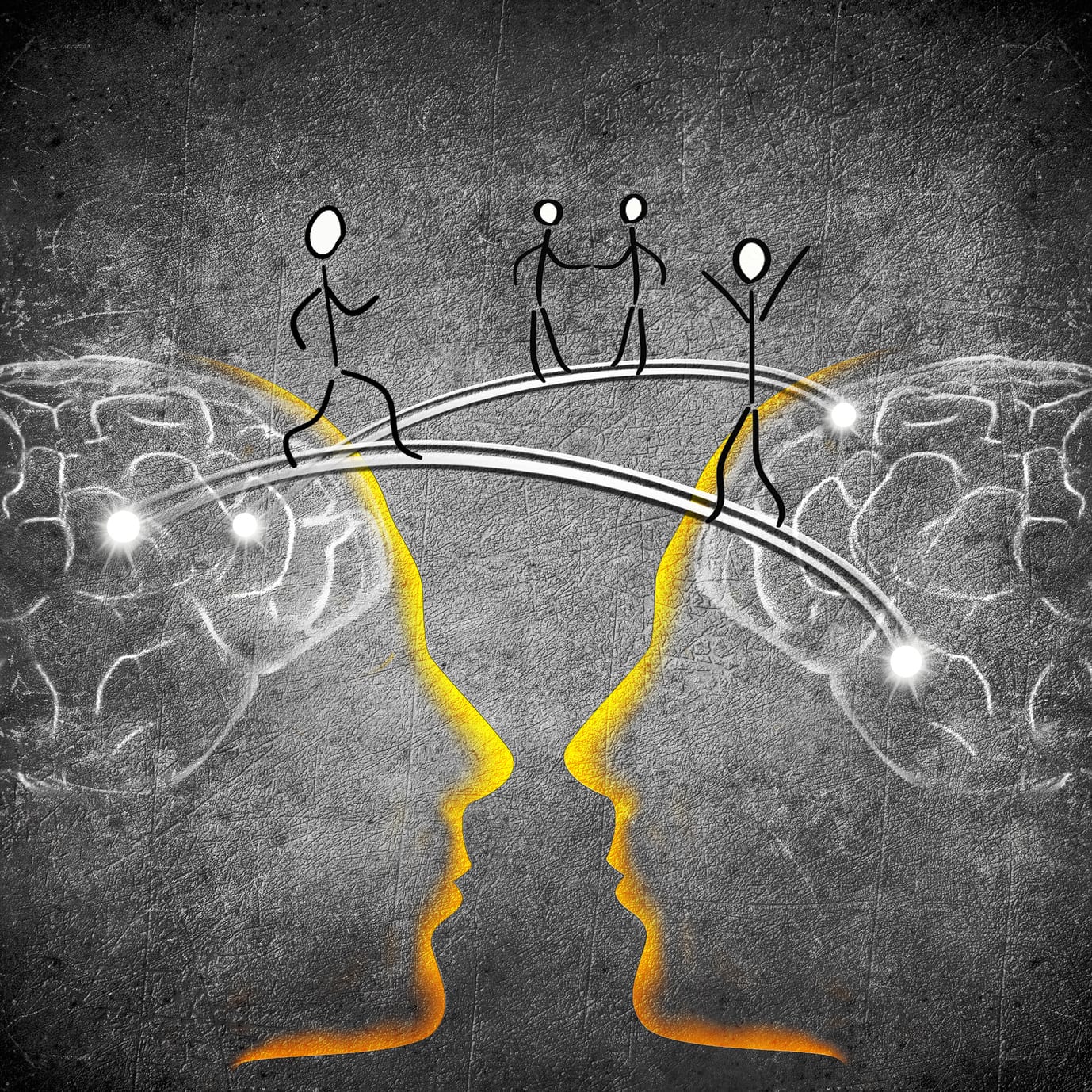Communication. Conversation. We do it every day. It’s an integral part of the human experience.
On the surface, it seems simple. So simple, in fact, that we don’t often actually think about it. But in reality, communication between two people is a very complex process.
Let’s attempt to break it down:
Think like a basic scientist. Your nervous system and my nervous system exchange energy. This is not “woo woo” stuff – stay with me.
- My visual system receives the photons (light energy) that hit my retinas and transmit signals to the optical receptors in my brain. My brain is taking in ALL that information and is creating internal representations of the signal. At the same time, my brain is interpreting and attempting to apply meaning to your facial expressions, body position, gestures, etc.
- My auditory system is receiving the sound waves on my tympanic membrane, vibrating my tiny ear bones and generating signals on the auditory nerve to the language centers of my brain. There, my brain deciphers the actual meaning of your words at the same time it is picking up on your inflection, the accent you have, your tone of voice, and your pace of speaking.
- My brain is combining the information from both of these processes to determine your emotional state and your intent at that moment. At the same time it is formulating signals that will generate my response to the energy and information I have received from you.
- If we are successful at this exchange of energy and information, we will both feel a level of satisfaction with being heard and understood. And in that context, we will engage in other behaviors that move us forward.
When you break it down to it’s parts, you can see that there is a lot going on. You don’t have to be a neuroscientist to get the picture.
If you want to improve your relationship with patients, a good first step might be to develop a strategy. A strategy means that you understand what’s happening and are taking intentional steps to improve the results. It’s not necessarily difficult, if you know what you are doing.
Here are some examples:
- What words can you use to get people thinking about their problem in a more constructive way?
- What’s the best tone to use with a patient who is angry?
- Where should you stand or sit when talking with a patient about a difficult subject?
- How do you know if your patient is listening to you?
- What signs could you interpret to let you know if the patient is going to be adherent with the treatment plan?
With the skills you will learn in this course you can develop strategies to communicate with even the most “difficult” patients. You’ll quickly find that using these new skills and strategies will take a lot of stress out of many situations. The best news is that you don’t have to be a neuroscientist to take advantage of the science behind communication.
Some of the benefits include:
- Less stress and burnout
- No more “difficult patients”
- Better clinical outcomes
Whether you are a physical therapist or other healthcare provider, or anyone who communicates with patients in the clinic, gaining the skills to become a better communicator is one of the most important investments that you can make in your professional development.

